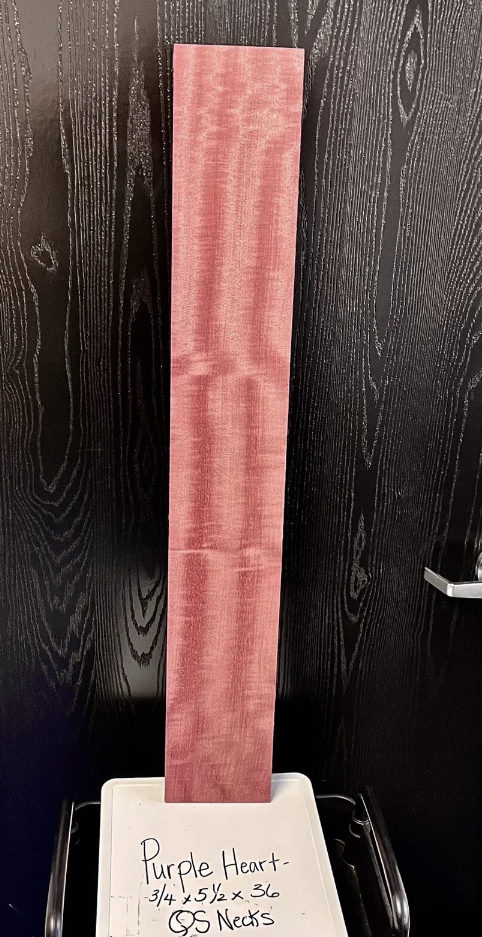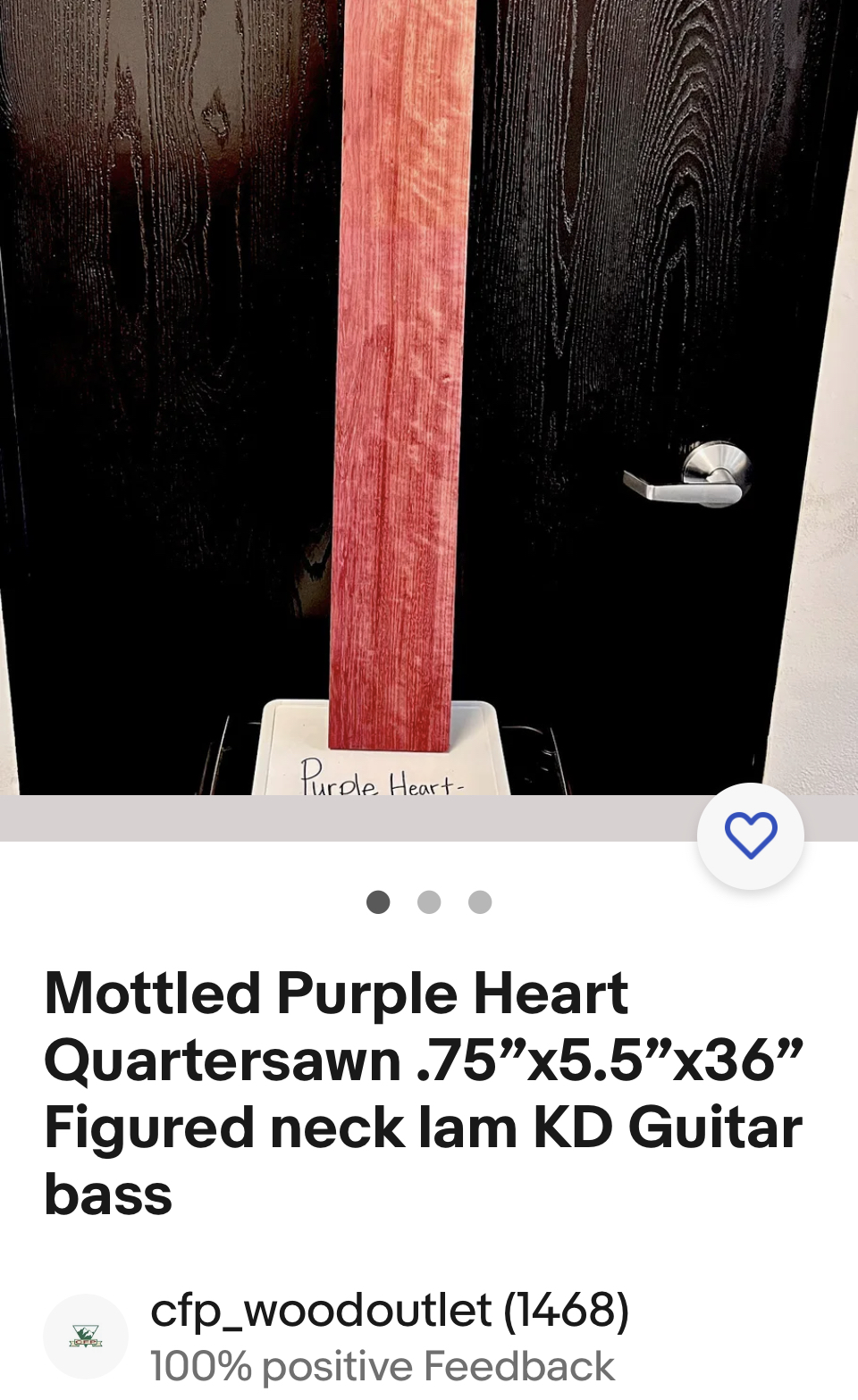Purpleheart Data
Purpleheart is a hardwood species that is known for its strength, density, and durability.
-
Hardwood lumber grading and sizing: Purpleheart lumber is available in wide width, long length and a variety of thicknesses . The lumber is graded according to the National Hardwood Lumber Association (NHLA) rules, which are based on grading rough lumber from the worst side 1. The basic grades include FAS, Select, FAS 1-Face, #1C, #2C, #3C and Frame.. Premium grades have the highest percentage of cutting yield.
-
Hardwood lumber strength and mechanical properties: Purpleheart wood is considered one of the strongest and densest woods available on the market 3. It has a Janka hardness of 2,520 lb f (11,190 N), modulus of rupture of 22,000 lb f /in² (151.7 MPa), elastic modulus of 2,937,000 lb f /in² (20.26 GPa), crushing strength of 12,140 lb f /in² (83.7 MPa), and a specific gravity of 0.76-0.9.
-
Hardwood lumber working and physical properties: Purpleheart wood has a medium texture with good natural luster 4. The grain is traditionally uniform and consistent but can vary, especially in figured varieties.r irregular 4. Purple Heart generally machines and turns well but requires sharp cutting blades and appropriate machining speeds. Similar to Spanish Cedar, purpleheart can emit a gummy resin when heated up. This resin is tricky to avoid as it’s often not visible on the exterior surfaces of the purpleheart at room temperature.
-
Depending on the grain orientation, it can be difficult to plane without tearout 4. Purpleheart also has a moderate dulling effect on cutters 4.
-
Hardwood lumber availability: Purpleheart lumber is commercially available in both lumber and turning blank form in the United States in most thicknesses, widths and lengths.
-
Main uses: Purpleheart wood is used for paneling, flooring, furniture (tables or tabletops), art pieces, and a wide variety of specialty wood items such as tool handles, inlay, marquetry, decorative veneers, luxury items, musical instruments, stairways, turning, indoor and outdoor decoration, cladding, vats, boat building, heavy outdoor construction work such as bridge building or load-bearing columns or dock works 3.
-
Finishes: Purpleheart wood glues and finishes adequately when compared with other high density hardwood species. Oxidization and resin seepage are two of of the noted issues.
-
Sanding techniques: Purpleheart wood has mid-level texture & natural luster/sheen that accentuates when sanded 24.
-
Finishing techniques: Purpleheart wood finishes well with most commercially available hardwood lumber finishes
Figured Purpleheart Wood
Purpleheart is a South American hardwood valued for its bright distinctive deep purple color 12 On a wild side-note, the band Deep Purple was named after the jazz song popularized by bandleader Paul Whiteman – by all accounts a fantastic person, as well as musician, who passed away in my hometown of Doylestown, PA in 1977. Iconic guitarist Ritchie Blackmore’s grandmother used to play it on the piano. What a cool name!
Purpleheart Color Changes!
Purpleheart timber grows primarily in Central and South America 1. Its heartwood appears bright purplish-brown when freshly cut. However, oxidization changes the heartwood to a darker purple hue. This is similar to how oxygen exposure affects cherry wood.
Purpleheart Lumber Issues
Purpleheart is durable, and insect resistant, generally speaking, Working with purpleheart presents some unique challenges for woodworkers:
- if the wood is heated with dull tools, or if cutter speeds are too high, purpleheart will exude a gummy resin that can clog tools and complicate the machining process.
- Depending on the grain orientation, it can be difficult to plane without tearout.
- Purpleheart can also dull cutting blades 13.
The grain of purpleheart is typically straight but can also be wavy/ irregular. Purple heart’s texture is medium. It has exceptional natural luster and chatoyancy. 1. Purpleheart has a Janka hardness of 2,520 lb f (11,190 N) 1, which puts it between oak and hickory on the scale.

In terms of woodworking properties, purpleheart is known for its stability and resistance to warping 3. It glues well and finishes well with oil or wax finishes3. However, it is important to note that working with purpleheart can be challenging due to its density and hardness 3.
In conclusion, curly purpleheart lumber is an excellent choice for bright color woodworking projects due to its distinctive color & durability. However, working with purple heart requires special care and attention due to these properties.
Before using figured purpleheart lumber for the first time, I recommend consulting with woodworkers with purpleheart experience. Then decide if it’s right for your project.
Mottle-Figured Purpleheart For Sale
Purple Heart figured wood is available at Commercial Forest Products’ eBay store here.



